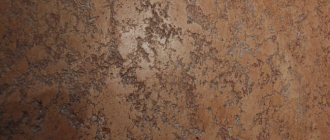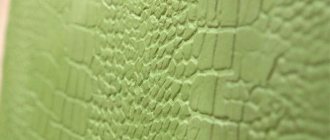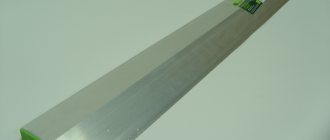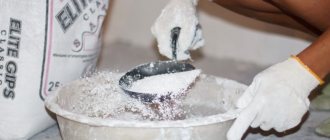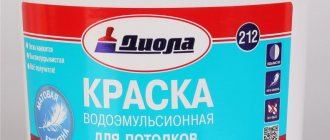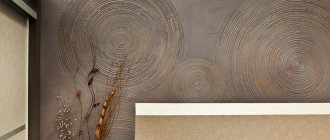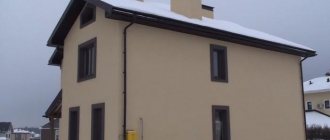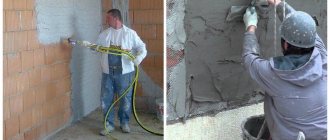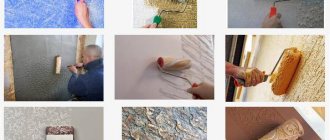The machine method of applying plaster significantly reduces the time of repair work and also saves material and physical resources. This method is especially indispensable when carrying out construction work on large objects that need to be completed in a short time.
By performing plastering work using a mechanized method, it is possible to automate and facilitate complex processes such as the preparation and application of plaster mixture on the surfaces of walls and facades.
Mechanical plastering - what is it?
Mechanized plastering refers to the process of surface finishing, during which walls are plastered using a machine. To implement this method, special equipment is used, which makes it possible to partially or completely abandon manual labor. As a result, all stages proceed several times faster, and the quality of the cladding is an order of magnitude higher.
Machine plastering is a rather complex process. Its implementation requires the availability of equipment, knowledge of its management and certain work skills. Without a professional approach and with the wrong choice of tools, the result is unlikely to be positive. To carry out manipulations independently, you need to undergo training and practice.
Features and specifics of the method
There are different technologies for mechanized application of plaster, which differ in the following indicators:
- degree of mechanization;
- principle of operation;
- method of mixing plaster;
- control of the amount of water.
During manual application of building mixtures, pressure on the working surface, which ensures proper adhesion of the solution to the base, is exerted by the master himself. With the machine plastering method, the composition is already supplied under pressure, due to which it reliably adheres to the base. Due to the replacement of manual labor with machine labor, all stages of work are greatly simplified.
Mechanical plaster is used to level any vertical and horizontal surfaces - internal walls, ceilings, facades. For its implementation, building mixtures are used that are adapted in consistency and composition. Without careful control of the proportions of the components, proper mixing and preparation, the plaster will not adhere to the surface properly, and expensive equipment may be damaged.
Pneumatic pistol
It is a threaded nozzle barrel. Different types of nozzles with different nozzles are screwed onto the thread to spray the mixture. At the top of the gun there is a container for the solution; the gun is equipped with a trigger for supplying the mixture according to a principle similar to the operation of an airbrush.
A hose from the compressor is connected to the gun handle. With the proper skill and availability of the necessary attachments, using a pneumatic gun you can perform not only rough work, but also finishing decorative finishing of walls.
Types of jobs
Machine plaster can be used everywhere; there are practically no restrictions on areas of economic use. There are only recommendations on the seasonality of work. So, in winter, you should not plaster facades and other external surfaces, since they must have a temperature of +20 degrees and above. Otherwise, the finished layer will quickly crack.
Interior work
To decorate walls inside houses, apartments, and other heated premises, all types of solutions can be used, although gypsum solutions are more preferable, which are easy to apply and require a smaller layer thickness. It is only important to remember that cleaning equipment from gypsum mixtures must be done in a short time, because after hardening it will be difficult to remove the gypsum.
When performing exterior work, it is important to properly prepare the surface - remove large defects and apply primer. Immediately before plastering, the walls are moistened with water and only then they begin to spray the composition. To reliably hold an impressive layer of cement plasters, a mounting mesh is attached in advance. Reinforcing material is also used on monolithic walls, which are too smooth and do not provide the necessary adhesion force to the mortar.
Mechanized application of gypsum plaster indoors
Facade coating
Work on external surfaces is carried out in the warm season, but not in direct sunlight or in windy weather. Only at positive temperatures can you mix a high-quality solution and properly level the walls. Typically, for facade finishing, cement-sand mixtures with a fairly coarse fraction are used, and the particle size should be correlated with the equipment settings. You need to set up the machine especially carefully when applying a layer of decorative plaster with pebbles or other inclusions.
Machine plastering of facades
Applying dry mixture
Mechanized plastering can be carried out using pre-prepared solutions, as well as dry construction mixtures, and in the second case, manual labor will be further reduced. It is important that the equipment is connected to a standard electrical outlet and has access to running water. The order of work will be as follows:
- pouring the dry mixture into a special container;
- connecting the machine to the network;
- setting the parameters for mixing the solution;
- preparing plaster with a uniform consistency;
- supplying the solution to the working surface under pressure.
Thanks to the perfectly smooth, airy structure of the plaster, the quality of the surface finish will be at a high level. After drying, such walls can be used for painting or pasting with thin wallpaper, even without puttying.
Surface treatment with ready-made solutions
If the plaster is poured into the device in a ready-made form, you will not have to worry about the water supply. To increase the time before hardening, the mixture is constantly stirred by a machine, as a result of which the setting process is extended. Ready-made mortars are best suited for plastering the ceiling, as well as for pouring screed on the floor. It is only important to prepare the base in advance, set the beacons at the level so that the result of the plastering work is excellent.
FAQ
Amateur repairmen and even novice professionals in the field of mechanized wall plastering initially ask many questions about the features and technology of machine plastering.
Professionals with many years of experience in the field of construction and finishing work answer the most common questions:
Gypsum plaster is modern, but cement plaster is outdated and not worth using?
Not at all. It’s just that different types of plaster compositions are good for different jobs. For example, cement plaster will not fail even in the bathroom or on the facade, while for rooms a gypsum mixture may be more convenient and have better properties.
They say that priming is not necessary; you can simply wet the surface before applying the solution so that the wall does not absorb moisture from the mixture. This is true?
To obtain a high-quality, durable plaster coating, it is better not to neglect the primer. Due to the soil, the plaster adheres more firmly to the surface, and when dry it is especially durable.
It is not necessary to do a multi-layer coating and wait for the layers to dry. Isn’t it easier to immediately apply a layer of the required thickness?
No, if a thick coating is required, it cannot be applied in one layer. It simply will not withstand the loads, it will crumble, crumble and crack.
Is it possible to add more water when preparing the solution to save the mixture?
No, this is unacceptable, you must strictly adhere to the proportions on the packaging. Otherwise, the plaster will lose all its meaning. Such a coating may not harden properly, float and run, even despite long leveling.
If you rent a plastering machine, you can do it alone. This is true?
No, It is Immpossible. The process of machine plastering should involve a minimum of 2, and preferably 3, people. One person cannot do it, the idea is a failure: a waste of a huge amount of money on unnecessary rental of expensive equipment.
Equipment and tools
Specialized departments offer a fairly large selection of tools and equipment that help mechanize the process of applying plaster. Among them are the simplest ladles for plaster, guns and even automated stations and robotic plasterers.
Pneumatic hopper
A pneumatic shovel is a metal bucket with a volume of 3-5 liters or more with holes for plaster at the bottom. Opposite there are air nozzles in a number similar to the number of holes for supplying the plaster composition. The kit includes a retractable handle with a handle that allows you to control the supply of solution and regulate the working pressure (usually it is 4-6 atmospheres). Separately, for such a device you will need to buy a compressor with a capacity of 35 cubic meters or more. m/hour and hose.
Plaster pneumatic shovel with compressor
There are two types of pneumatic shovels on sale - ceiling and wall, differing in the shape of the bucket and the position of the handle. The process of working with any of the devices is not too complicated compared to plastering stations. The solution is mixed in advance, scooped up with a hopper, and installed at a short distance from the wall. Then, after turning on the machine, the plaster is sprayed onto the base using compressed air.
Pneumatic pistol
This gun consists of a nozzle barrel on a handle with an attached container for plaster. The container can be made of metal or plastic and have a fairly large size (up to 9-10 liters). Various attachments are attached to the barrel, after which the trigger is pressed, and the plaster begins to flow onto the wall. After pressing again, the supply of the building mixture stops. Using a pneumatic gun you can:
- rough finishing;
- final application of the solution;
- textured spray.
Cartouche gun for applying solution
The cost of such devices is the lowest among devices for mechanizing the work of a plasterer. They are not difficult to use, but it is still better to practice on small surfaces first.
Plastering machines and stations
For significant volumes of work (in areas of 30-50 sq. m), plastering machines are the ideal solution. The cost of such devices is high, as is the rental, so, as a rule, only professional construction teams own them. Plastering installations have a complex design. Here are their main components:
- bunker for dry plaster mixture;
- container for mixing and storing finished plaster;
- screw feed system;
- Control block;
- compressor.
Construction of a screw-type plastering machine
Screw-type plastering stations are 100% automated. After mixing, the plaster passes under pressure into the sprayer and then onto the surface to be treated. Pneumatic machines require pouring a ready-made construction mixture, which is mixed by a master in other equipment or manually.
Typically, domestic plastering stations are large in size and have less functionality than imported ones. However, most of these devices are suitable for working with any solution, and foreign machines are more “choosy”. Some plastering stations are even suitable for spraying paint, lime, pouring screed and self-leveling floors.
To work with small and medium-sized and complex devices, one operator is enough; high-tech devices require servicing by a large number of specialists. Immediately after completing the plastering process, you need to thoroughly rinse the containers, hoses, or turn on special cleaning modes.
Plastering station m-Tec
Robot plasterer
This is a type of plastering station that allows you to apply the solution to smooth vertical bases. The central part of the device moves along guides attached to the floor and ceiling.
The construction mixture is mixed separately, even before being fed into the device, so you can use ordinary plasters and prepare them with a mixer. Most often, robot plasterers are used to finish buildings no more than 7 meters high. It is also not suitable for working with staircases, facades, uneven bases and ceilings.
Plastering and grouting devices
Disc plastering and troweling machines allow you to level already treated walls, and the plastering process can even be done manually. The foam or chipboard nozzle in them is connected by a flexible shaft to an electric drive - a rotary motor with low voltage (42 V) and medium current frequency (200 Hz). There is no risk of electrical shock to the operator even when working on wet substrates. In single-disc trowels, the nozzle rotates in one direction. Double-disc devices have two circles that can rotate in opposite directions.
Plaster leveling machine
Using mini equipment
The process of applying plaster to walls can also be facilitated with the help of mini-equipment - a pneumatic gun and a pneumatic shovel. Despite their small size and light weight, these devices have a high level of performance, which also significantly speeds up the process of repair work. These devices have a more affordable price than large mechanized machines, so their cost is fully recouped in the process of one repair. This set of tools is the best option for small construction teams specializing in finishing houses and carrying out repair work. For example, an air gun has nozzles of different diameters, which allows you to use different solutions and, accordingly, choose the method of their application to suit the conditions of the object.
Solutions for plastering work
For mechanized plastering, two types of mixtures are used - cement-based and gypsum-based.
Cement-sand compositions
Plaster with the addition of sand and cement is considered the most popular, especially for facade work and wet rooms. It easily tolerates contact with water and temperature changes, is very durable and does not require frequent repeated repairs. Cement plasters boast high adhesion to different types of bases, and standard measures are sufficient to prepare for work. Among the advantages, it is worth mentioning the low cost of cement-sand plasters, because all their components are inexpensive.
Preparation of cement-sand mixture for a plastering station
Among the disadvantages of such solutions are:
- unsuitable for plastic, wood, paint;
- significant weight of the plaster layer;
- need for finishing (puttying);
- long drying time.
Gypsum compositions
Gypsum-based plasters are environmentally friendly, safe, and light in weight, so the finished layer does not weigh down the wall too much. They can be applied to any surface, and in most cases without reinforcement. Other advantages of gypsum plasters include:
- no shrinkage, deformation, cracking after drying;
- increasing the heat and sound insulation of the building;
- maintaining an optimal indoor microclimate;
- non-flammability, fire safety;
- excellent aesthetic qualities, perfect whiteness and evenness.
The cost of gypsum mortars is an order of magnitude higher than the price of cement-sand plasters. However, due to the low consumption, the total repair costs will be approximately the same. Gypsum plasters are not used in wet rooms or for outdoor use - due to their high porosity, they become saturated with water and fall off.
Selection of plaster
First, you need to decide on the type of building mixture, because some installations involve working with ready-made compounds, while others are capable of mixing the solution themselves. When selecting the composition, the type of surface is taken into account: some plasters are considered universal, others, due to the presence of special modifiers, are more suitable for a specific material - concrete, brick, cellular concrete, foam blocks, etc.
When purchasing, you need to pay attention to the drying speed of the solution (it is also regulated by adding various substances), the degree of plasticity, and strength. Plaster for outdoor work must be frost-resistant and withstand many cycles of freezing and thawing. If you do not plan to carry out finishing puttying, you should choose gypsum plaster for the job, but not for a wet room.
Frost-resistant compounds are used for external work
Surface preparation
Before starting mechanized plastering, it is important to carefully prepare all working surfaces:
- remove old finishes that are poorly attached to the wall, clean off paint and plaster deposits, and wash off lime;
- clean the walls from dirt and dust, which is especially important for street surfaces;
- Depressions and crumbling areas should be cleaned as much as possible, reinforced with fiberglass mesh, and sealed with cement plaster;
- treat metal elements with an anti-corrosion compound;
- expand the cracks and also seal them with plaster;
- remove dust from the base by treating with deep penetration soil in 1-3 layers (depending on the degree of porosity);
- if necessary, distribute special plaster profiles in the corners.
Preparation for plastering walls
It happens that external surfaces strongly absorb moisture. In this case, priming with “concrete contact” will help, as well as pre-wetting the wall, applying a thin layer of mortar, drying it and further standard plastering.
Errors in machine plastering walls
When applying plaster mechanically, errors occur:
- They do not follow the instructions for the equipment; as a result, unmixed substances (lumps) may appear in the working mass, electric shock, or equipment breakdown.
- They use mixtures of “home-made” production or for manual plastering. The first is unacceptable, since the correct operation of the unit is not guaranteed, the second, even if less serious, can also give a negative result, since the operation of the mixer is programmed for special mixtures.
- They do not take measures to increase adhesion - notching the concrete, not priming, not using mesh reinforcement when sealing joints and cracks.
- Failure to comply with maximum layer thickness requirements. The layer becomes brittle and falls off easily.
- Failure to comply with the hardening and drying regime. Use of heating devices.
- Violation of the consistency of the composition. Different compositions may differ in consistency (worse to fit or less adhesion and adherence to the wall).
- A serious mistake is adding SS to the prepared solution. The consequence is the formation of lumps.
Video on setting up and operating a plastering station.
Equipment setup
Before work, assess the readiness of plastering devices for work. Typically, adjustments and adjustments are carried out directly at the place of finishing of premises or facades. They check the machine for compliance with safety regulations, make a test connection to the electrical network, source of water supply (fixed network, barrel, etc.).
Be sure to evaluate the density of the finished solution or accurately measure the required proportions of the dry mixture and water. They also configure the necessary parameters if the need for this is noted in the manufacturer’s instructions.
Stages of plastering work
The use of beacons will make it easier to apply plaster and will allow you to level the walls faster and better. To install the guides, carefully measure the base and find its most convex section, which will be the top point for applying the solution. After fixing the beacons, they begin plastering and rubbing the walls. If work is carried out indoors, drafts should be completely eliminated.
Applying plaster
First, the plastering installation is connected to the network, plaster powder is poured into it or the finished composition is poured into it. Then they begin to process the corners and joints of the structures, and only then fill the main area. The nozzle of the device is held at a distance of 15-30 cm (depending on the type of device), making sure that the plaster is sprayed strictly perpendicularly. Each new strip of solution should slightly overlap the previous one, but not higher than that marked by the beacons. The higher the speed of movement of the nozzle, the thinner the plaster layer.
Leveling the surface
The applied layer of plaster is leveled according to the rule, unless, of course, the work is carried out using a robotic plasterer. Also for this purpose, smoothers and large spatulas are used. Beacons are removed or left inside (according to the chosen technology). If it turns out that in some areas the layer of plaster is too thin, “increase” it manually and level it again. It is important to carry out this stage of work immediately after applying the plaster, while it retains its fluidity.
Alignment using beacon rules
Trimming the solution
20 minutes after leveling, the mortar is trimmed using a cutter (trapezoidal rule), which will help to finally form the finish. First, apply the tool to the surface and drag it a little, as if cutting off a thin outer layer. Make sure that the main layer does not drag behind it. Otherwise, wait a little more time and repeat the manipulations. On a flat plane, it is permissible to leave fluctuations of no more than 2 mm for every 2 linear meters.
Leveling the surface
After another 20-30 minutes, they begin to grind the base (you can start this stage after 2-3 hours, but only after first spraying the wall with water). For this purpose, graters, trowels, and trowels are used. If the surface is being prepared for painting, 6 hours after rubbing, polishing is done - repeated ironing with a wet tool.
Technological process and step-by-step instructions
The technology includes surface preparation, preparation of equipment, application of the mixture, leveling, cleaning and drying of the coating.
Surface preparation
Mechanized plaster does not eliminate the need for preparatory surface treatment.
Preparation includes an action algorithm consisting of sequential steps:
- Surface cleaning . Removing traces of wallpaper, dirt, paint, glue, grease, concrete deposits.
- Working with weak points. Cleaning the crumbling areas with rough sandpaper, strengthening the depressions with a metal mesh with a plaster mixture. Seal small holes. Cutting and cleaning of protruding metal elements, followed by treatment with an anti-corrosion compound.
If we are talking about the facade surface, reinforcing mesh is necessary for the entire area of the walls. This can be done not only at the preparation stage, but also immediately after applying the mixture, by drowning the mesh in the solution.
- Removing dust from the surface.
- Moisturizing or priming. Primer is preferable.
Expert opinionKukushkin Anatoly Sergeevich
Repair specialist
For the best adhesion of the plaster to the surface, it is better to prime it twice, waiting time for the layers to dry.
- Measurements . Take measurements for a flat surface and base using an arrow, levels, or a laser marker.
- Installation of corner profiles.
- Marking with beacons. Beacons can be installed from metal or mortar, focusing on the points of greatest protrusion of the surface. Beacons are attached pointwise to the prepared solution.
Equipment preparation
In the case of a hopper bucket or an air gun, no special adjustment is required. But you will have to prepare the solution yourself. It is also important to set the optimal pressure on the compressor, based on the parameters of the finished mixture. And for a pneumatic gun, you still need to choose a suitable nozzle nozzle.
Builders recommend choosing the size of the nozzle according to the parameters of the mixture and the required thickness of the future coating layer. If the plaster mixture is thinner and the layer is supposed to be quite thin, a narrower nozzle is needed. If the solution is thick and a thicker layer is needed, it is better to take a nozzle with a wider hole.
If we are talking about machine plastering, then the unit must be prepared for work.
The preparation is not difficult:
- Installation and assembly of the machine. Installation of the mixing tank and supply pipe. Selecting and installing the desired nozzle attachment.
- Connection. Connect to the water supply, then connect to the network.
- Safety check.
- Supply of mixture. Pouring dry plaster mixture.
- Settings. You can set the desired parameters for diluting the mixture using the remote control or control panel on the machine body. All that remains is to wait time for kneading and aerating the mixture, after which the machine is ready for use.
The head of a finishing team with many years of experience is R.V. Filatov. advises that when setting up, take into account the recommendations on the packaging of the dry mixture, as well as the material of the surface being treated and the technology chosen by the workers (fast, step-by-step, multi-layer, etc.).
Application of the solution
Despite the fact that different professionals prefer to work with slightly different techniques, there are still general recommendations for applying plaster by machine:
- Nozzle placement. The nozzle of the hose or gun is placed perpendicular to the surface, at a distance of 20-30 cm from it.
- Supply of solution. To do this, press the trigger lever or open the air valve.
- Start of application. First, corners and joints are filled with plaster, moving the nozzle evenly from top to bottom, adjusting the thickness of the layer with the speed of movement.
- Plastering flat areas. It starts from top to bottom, the nozzle is guided along the wall at a distance between the beacons, then the nozzle is directed in the opposite direction between the same beacons. The mixture is overlapped slightly. The step width is 3-4 cm. The movements are not interrupted until the very bottom of the wall. After that, a transition is made to the neighboring section, and the operations are repeated.
Expert opinion
Kukushkin Anatoly Sergeevich
Repair specialist
The slower you move the nozzle, the more solution hits the surface. This means the layer will be thicker. For cement mixtures, it is recommended to apply a layer no thicker than 5 mm at a time, and for gypsum mixtures, an application thickness of 1 cm is acceptable. If a thicker cement coating is needed, the work is carried out in several stages.
Alignment
Typically, gypsum mixtures are leveled immediately, and cement-sand mixtures are leveled after about an hour. Exact recommendations are given by the manufacturer on the packaging. The main thing is to start leveling until the mixture sets.
- Alignment order. Alignment begins from bottom to top.
- Tools. The plaster rule is used.
- Correction of defects. Excess mixture can usually be removed and applied to those places where there is not enough solution. After which the alignment is repeated. If texture is needed, then they go over the surface with smoothers, trowels and plaster floats.
Cleaning and drying
It goes in several stages:
- Pruning. Performed approximately 20 minutes after leveling. To do this, drips, sagging and other flaws are cut off using a trapezoidal rule. The rule is held at an angle like a knife.
- Mashing. This is done about half an hour after pruning. Grouts, grouting machines and trowels are used.
If time is lost, then you can rub the surface after a couple of hours, having previously moistened it.
- Removing beacon markings. Perform after the layer has set to the surface. The passages are filled with plaster and leveled with a large spatula.
- Drying. Drying time depends on the parameters of the mixture and surface. The packaging of the mixtures usually provides information about the time and conditions for complete drying of the coating.
Advantages and disadvantages of the mechanized method
The method of applying plaster using special equipment has its pros and cons. Here are its main advantages:
- High speed. Plastering any surfaces occurs an order of magnitude faster than manual application of the building mixture. Depending on the type of plaster, the acceleration occurs 4-7 times, and there is no heavy physical work.
- Enhanced adhesion. The release of the solution under pressure, which is the same throughout the entire working process, helps improve the quality of adhesion to the base. To achieve a similar effect when applied manually, you need a lot of time and physical effort.
- Excellent quality. Mixing of the solution in plastering installations is carried out continuously. This helps make the mixture homogeneous, with a smooth texture, so the dried layer dries evenly and does not crack or warp. The finished plaster is monolithic, without seams or unsightly joints.
- Significant area. Using the mechanized method, you can immediately process an entire room without interruption, which also reduces the risk of cracks and speeds up the overall repair time.
- Saving material. Some equipment allows you to reduce the consumption of plaster mixture compared to manual application. This is achieved by optimizing the viscosity of the solution and preventing it from deteriorating, going into waste, or being knocked off the wall.
- Versatility of equipment. Many types of plastering stations make it possible not only to apply plaster, but also to pour cement-sand screeds onto the floor.
Mechanized plastering also has disadvantages. Thus, equipment for work is quite expensive, so purchasing high-tech stations and robots on your own is not advisable. However, simple devices such as hopper buckets are much cheaper, and every craftsman can afford to purchase them. To work with machine installations, two people are often needed, so you will have to invite an assistant.
Electrical installations are energy-dependent, and at remote sites, in new houses where there is no electricity yet, a diesel generator will have to be connected. In addition, to use complex equipment, you need to gain experience in its operation, cleaning, and maintenance. Applying plaster in the evening or at night will not work if there are neighbors nearby: plastering machines usually make quite a lot of noise.
Which plastering is better - manual or mechanized?
Each technique has its own advantages and disadvantages, and the choice of a specific method should be made individually depending on needs and capabilities. To make the right decision, you should familiarize yourself with the following conclusions:
- In terms of price, some station plasters and pneumatic shovels are cheaper than similar compositions for manual application. But in this case we are talking about gypsum solutions, which contain additional improvers and modifiers. If you prepare the composition for application with a spatula yourself, mixing cement, sand, water, then the costs will be much lower than when purchasing dry mixture in packages.
- With mechanized wall finishing, 2-3 kg less mortar is spent per square meter of area than with manual plastering. This advantage is lost only by replacing a more expensive mixture with a cement mixture made by yourself.
- With strict adherence to technology and sufficient professionalism, it is possible to achieve no less high quality manual finishing than with mechanized plastering. To prevent the finished layer from cracking, you can use fiberglass, and the problem will be solved.
With mechanized application, the solution consumption is less
Which method is cheaper
The cost of plastering work performed by mechanization ranges from 220 rubles/sq. m and above. Hand plastering usually has a higher price - 250-300 rubles per 1 sq. m. m of the first layer and from 550 rubles for 3 layers. But in practice, the price of finishing walls using special equipment may turn out to be more than indicated.
For example, with a total area of less than 2000 sq. m it increases, because it is more convenient for craftsmen to work with large volumes. Time for installing beacons and preparing surfaces will also be paid additionally. Slopes can only be plastered by hand, and you will have to pay the craftsmen separately for this. Also often included in the price are:
- moving time, equipment delivery costs;
- time to prepare the device and wash it after work;
- costs for installing plaster corners.
The use of the machine method is effective for large volumes of work
The owner should also consider energy costs, which turn out to be quite significant when using powerful plastering machines. As a result, the price of conventional and mechanized plaster may be approximately the same.
Concept and features
Mechanized plastering is the process of plastering surfaces using plastering machines, stations and other equipment that simplifies the procedure. This eliminates manual application of the mixture: it is automated. The operator will only have to set up the machine and level the coating layer applied with it.
Like any technological operation, mechanized plastering using plastering stations has its strengths and weaknesses. Let's look at them:
Pros:
- increasing productivity and saving time;
- reduction in mixture consumption;
- greater elasticity of the plaster mass;
- obtaining a uniform layer;
- increasing the attachment of the mixture to the surface due to its injection under pressure;
- there is often no need for finishing putty;
- strength of the plaster sheet;
- automated mixing of dry mixture;
- high quality of kneading;
- versatility for interior and exterior work with the correct selection of mixtures;
- high resistance of the coating to shrinkage, cracking and chipping.
Minuses:
- high cost of purchasing and renting plastering machines;
- work skills required;
- you need to work as a team;
- makes a lot of noise;
- large contamination of the space with the flowing mixture;
- energy consumption, and sometimes the requirement for a high-voltage electrical network;
- not suitable for curved surfaces;
- A water supply is required when using a dry mixture.
As you can see, although mechanized plastering simplifies the work, the process itself is also not without difficulties. Using this method requires certain skills. Therefore, it is better to trust the professionals. You can’t handle a plastering machine alone, and especially without experience.
At least two people must be present when operating the plastering station. The operator sets up the machine and monitors the supply of materials, and the foreman controls the process of applying the layer.
The final quality of work will depend on several factors:
- equipment performance;
- professionalism of employees;
- quality and properties of the plaster composition (is it compatible with the material of the surface being treated, what is the fraction of dry particles, elasticity of the finished mixture);
- type of work (internal or external);
- characteristics of the object (material and properties of the rough surface being processed, working environment conditions: humidity, temperature, etc.);
- following recommendations for preparation, application technology and drying of the solution.
Let's look at some important points in more detail.
Equipment manufacturers and their products
The most popular are plastering stations and buckets of the PFT brand from Knauf (Germany), which are characterized by excellent quality. For example, the PFT G4 380 model sprays 6-65 liters of plaster per minute, has the ability to deliver up to 50 meters (vertically - up to 30 meters), and operates with a pressure of up to 30 bar.
The PFT Monojet brand device has less impressive characteristics, but is cheaper: productivity - 15-35 liters/minute, pressure - up to 15 bar, flow - up to 26 meters. All equipment operates from standard networks, but there are also multivoltage devices (220V/380V). Price - up to 250-300 thousand rubles.
Plastering station PFT Monojet 3.35
Other well-known manufacturers of plastering equipment are:
- Putzmeister;
- NOVO;
- "Typhoon";
- "Meteor";
- "Century";
- "Hermes".
Among the domestic devices for applying plaster, it is worth highlighting the Afalina stations, which are also used for pouring floors. For example, the Afalina ShM-30 machine has high functionality; it independently mixes plaster in a special container, and the proportions of the components are strictly programmed. The device is equipped with different nozzles, has high productivity, and covers a fairly large area of walls, floors or ceilings with plaster in a short time. The only drawback of the machine is its large dimensions, which make it somewhat more difficult to maintain than its imported counterparts.
Plaster application machine Afalina ShM-30
Plaster for mechanical application
Among the range of products for performing plastering work, you need to look for those that are suitable for mechanized feeding, which is always indicated by the manufacturer. There are no specialized compositions that would be intended exclusively for this method of application - each of them is also suitable for manual use.
"Prospectors"
The company offers various mixtures that are well suited for mechanized plastering. They will not damage expensive equipment or clog its important components and parts. There are gypsum and cement plasters of this brand on sale, as well as special cement-sand compositions for external use with special additives.
Prospector gypsum mixture for machine application
"Osnovit"
Under the Osnovit brand, universal plasters are produced that are suitable for manual and mechanized application. The manufacturer also produces separate compositions for each plaster layer (for spraying, filling cracks and dents, thin-layer processing and for facades) in gray and white colors.
"Volma"
This company was one of the first in Russia to produce mixtures suitable for machine application. Now the assortment includes various materials for string, lighthouse, and beaconless applications. You can choose plaster with the desired setting time, including an extended one (60 minutes). The materials also differ in particle fraction, with their maximum size being 1.25 mm.
Knauf
This German brand produces a huge variety of building mixtures for manual and machine plastering and puttying. Plasters suitable for hardware use are marked MP or MN. To obtain optimal results, it is recommended to use plasters of the brand in conjunction with PFT machines.
Mechanization of the plastering process provides a number of advantages, significantly reducing labor intensity and increasing the quality of the result. Professionals believe that the use of modern units is 100% justified by the aesthetics of the finish and the ability to complete the work in the optimal time frame.
